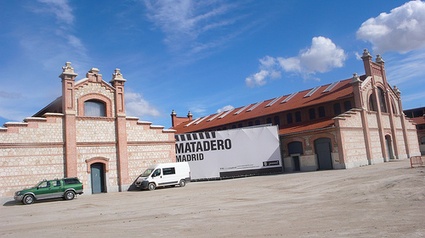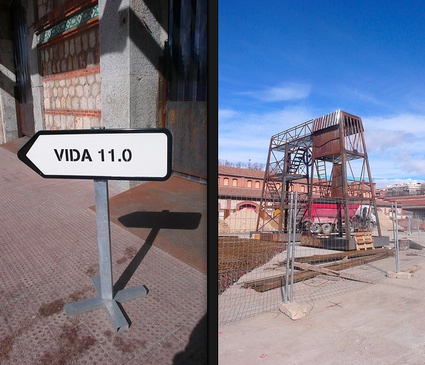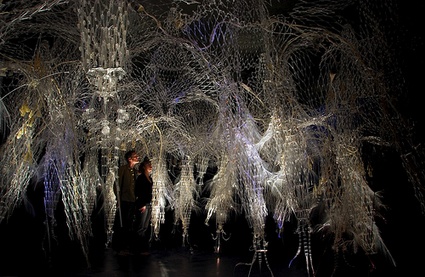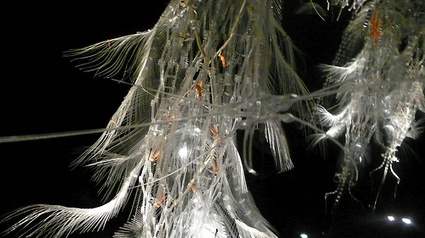

One of the issues raised by the development of new technologies, is how they will impact our identity of human beings. Interested in the conversation between art, science, technology and society, Fundación Telefónica has launched an International competition dedicated to art and artificial art called VIDA . This years they are celebrating the 11th edition of the competition by launching an online archive that documents thematically and chronologically the evolution of the discipline it has been so closely following for more than a decade.
Besides, Fundación Telefónica is setting up for the first time an exhibition of the winners of its competition (outside of the usual booth at the ARCO art fair that is). The three winners of VIDA 11.0 as well as a couple of other pieces are currently on view at Matadero Madrid. During the press conference yesterday, Francisco Serrano, Director of the foundation, couldn’t help but point to the irony of hosting VIDA (which means ‘life’ in spanish) into a stunning art center called Matadero (‘slaughterhouse’ in spanish.)
 Hylozoic Soil © Philip Beesley & Rob Goberz
Hylozoic Soil © Philip Beesley & Rob Goberz
The winner of the first prize this year is the uncanny, poetical and fascinating Hylozoic Soil, an immersive sculpture by artist and architect Philip Beesley.
Hylozoic Soil takes its cue from Hylozoism, the philosophical view that all or some material things possess life. It takes the shape of an artificial environment that seems to be made of the same substance as jellyfish, breathing like one, wrapping itself around you and exhibiting complex behaviour as you walk through it.

Delicate arms made of a shape memory alloy called nitidol gently move in reaction to people’s behaviour, while hanging pillars transmit a very quiet energy, miles away from the more direct and manly energy displayed by most robotic installations. Although the work manage to almost absorb visitors it has been developed using as little material as possible. The structure was expanded into an ethereal meshwork.
Allow me to copy and past a short text that gives more details about the artwork:
Hylozoic Soil implements a distributed sensor network driven by dozens of microprocessors, generating waves of reflexive responses to those drawn into its vast array of acrylic fern stalagmites. Different levels of programmed activity encourage the emergence of coordinated spatial behaviour: thirty-eight controller boards produce specific responses to local action, while a bus controller uses sensor activity collated from all the boards to command an additional “global” level of behaviour. The forest thus manifests a haunting, breathing organicity, as it stirs to envelop and charm its human explorers. In keeping with the tradition of biologist artist Ernst Haeckel‘s Riddle of the Universe (1899), which traced actions of organic and inorganic nature alike back to natural causes and laws, Beesley’s Hylozoic Soil stands as a magically moving contemporary symbol of our aptitude for empathy and the creative projection of living systems.
Video documenting the construction of Hylozoic Soil, at the Montreal Museum of Fine Arts in September, 2007:
More information in the book Hylozoic Soil, published by Riverside Architectural Press.
Part two of the report: Winners of VIDA 11.0 (part 2)
More details about the VIDA awards: Interview with Daniel Canogar. Last year’s coverage: Winners of VIDA 10.0, Honorary Mentions at VIDA 10.0.
